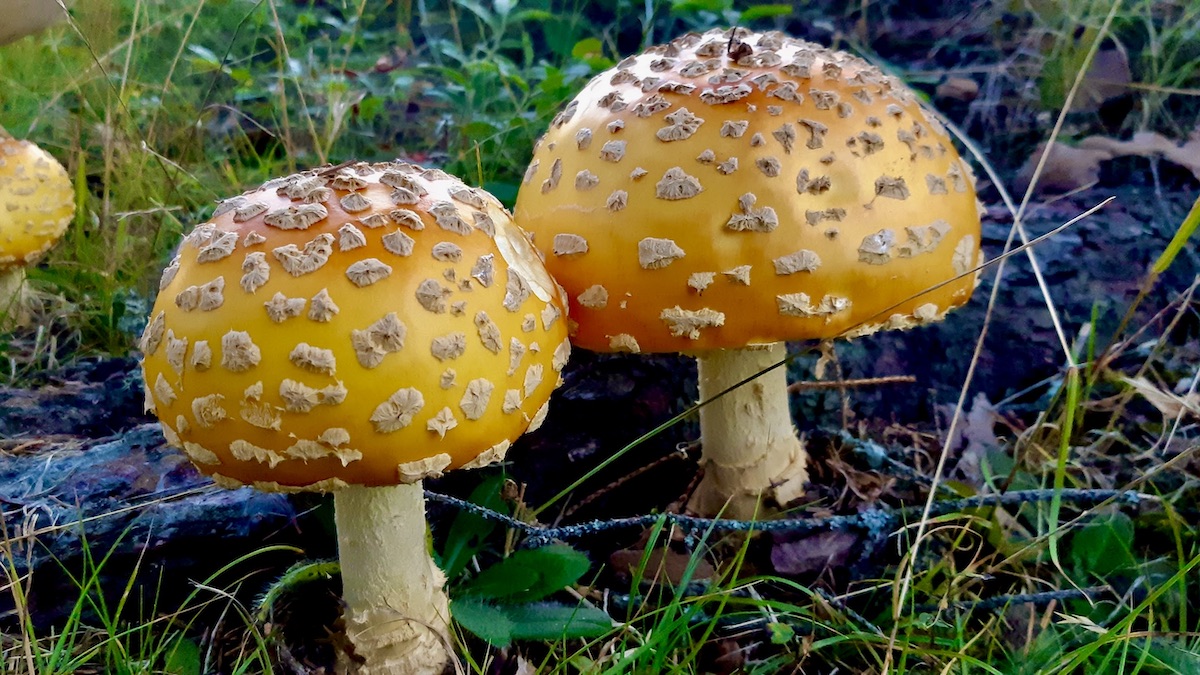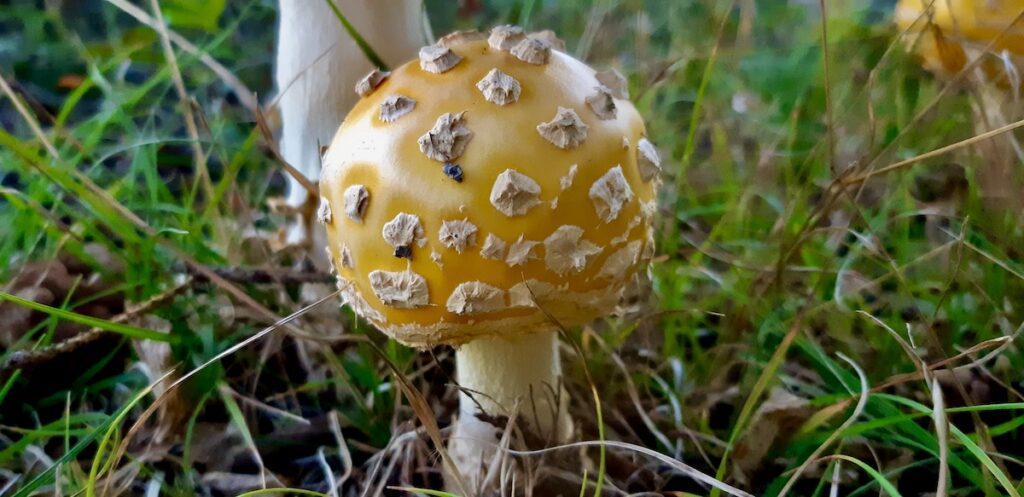
Why These Mushrooms Are Good News!
You know those striking, often brightly colored mushrooms that pop up on the forest floor, like the golden-yellow ones we’ve been looking at (Amanita muscaria var. guessowii)? While they might be beautiful to admire (and definitely not to eat!), they’re actually performing an incredible, vital service for the entire ecosystem right beneath your feet. Far from being just a pretty face, these fungi are true unsung heroes of soil health!
The Hidden Network: It’s All About Mycorrhiza
When you see a mushroom, you’re really just seeing the “fruit” of a much larger organism. The true star of the show is an expansive, invisible network of delicate threads called mycelium, which lives underground. And here’s where the magic truly happens: this mycelium forms an intimate partnership with the roots of trees, a symbiotic relationship known as mycorrhiza (from Greek words meaning “fungus” and “root”).
Think of it like a highly efficient, underground trading system:
- Fungus to Tree: The fungal mycelium, with its incredibly fine threads, can spread far and wide through the soil, reaching into tiny nooks and crannies that tree roots can’t access. It’s a master at scavenging for water and crucial nutrients, especially phosphorus and nitrogen, which are often scarce in forest soils. Once gathered, these vital resources are delivered directly to the tree’s roots.
- Tree to Fungus: In return for this incredible service, the tree shares some of the sugars and carbohydrates it produces through photosynthesis with its fungal partner. It’s a perfect example of teamwork where both organisms benefit immensely.

Boosting Soil Health and More
This mycorrhizal relationship doesn’t just benefit individual trees; it profoundly impacts the entire soil ecosystem:
- Improved Soil Structure: The dense network of fungal threads acts like a natural glue, binding soil particles together. This creates better soil structure, which helps with aeration (allowing roots to breathe) and significantly improves water retention, preventing runoff.
- Nutrient Cycling: Mycorrhizal fungi are crucial decomposers. They help break down organic matter, releasing trapped nutrients back into the soil where they become available for other plants.
- Disease Protection: Some studies suggest that mycorrhizal fungi can even help protect trees from certain diseases and make them more resilient to environmental stresses.
- An Indicator of Health: When you see a healthy flush of these mushrooms, it’s a strong positive sign. It indicates that the soil below is vibrant, teeming with life, and that the trees in the area are likely thriving thanks to their invisible fungal companions.
So, the next time you encounter a beautiful mushroom like the Amanita muscaria var. guessowii, take a moment to appreciate it not just for its striking appearance, but for the silent, tireless work it’s doing beneath the surface. It’s a powerful reminder that even the most seemingly simple parts of nature play complex and indispensable roles in maintaining a healthy, flourishing world.
Disclaimer: While these mushrooms are vital for the environment, it’s crucial to remember that Amanita muscaria varieties are poisonous and should never be consumed. Always admire fungi from a distance!





